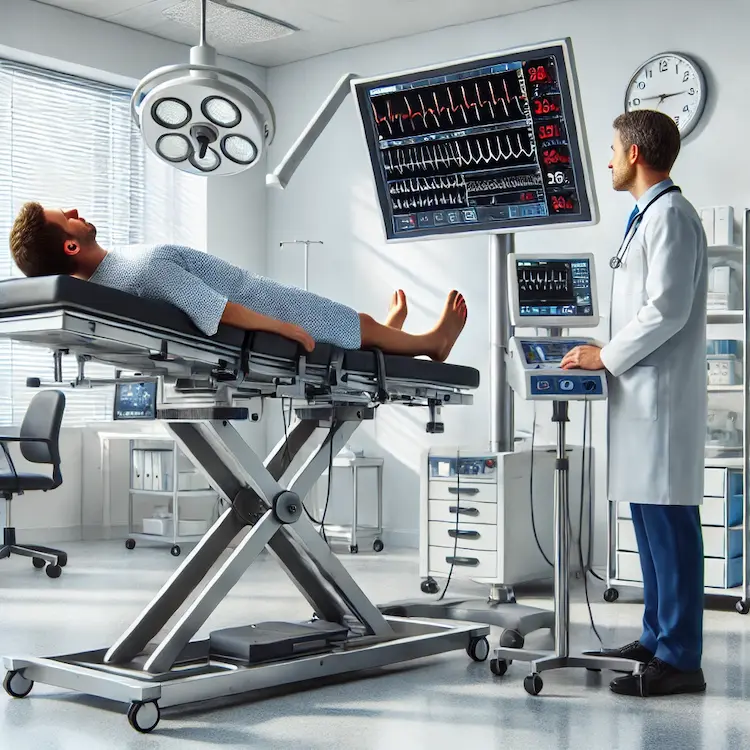Orthostatic Hypotension (OH), also known as postural hypotension, is a condition where blood pressure drops significantly upon standing up, leading to dizziness, fainting, or even falls. This detailed guide delves into its causes, symptoms, management strategies, and societal impact, providing actionable advice for readers.
What is Orthostatic Hypotension?
Orthostatic Hypotension is a form of low blood pressure that occurs when transitioning from a sitting or lying position to standing. This sudden change causes inadequate blood flow to the brain, triggering symptoms such as lightheadedness or fainting. OH is classified by a decrease in systolic blood pressure by 20 mmHg or diastolic by 10 mmHg within three minutes of standing.
Who is at Risk?
- Elderly Individuals: Age-related changes in blood vessel elasticity and baroreceptor sensitivity.
- People with Chronic Diseases: Conditions like diabetes or Parkinson’s disease.
- Medications: Use of diuretics, beta-blockers, or antidepressants.
Symptoms and Signs
The primary symptoms of OH are:
- Dizziness and Lightheadedness: Especially when standing up quickly.
- Blurred Vision: Caused by reduced blood flow to the eyes.
- Fainting (Syncope): A common result of severe blood pressure drops.
- Fatigue: Persistent tiredness due to poor circulation.
- Cognitive Impairment: Difficulty concentrating or “brain fog.”
These symptoms may vary in severity and frequency based on underlying conditions and individual health.
Causes of Orthostatic Hypotension
OH can be triggered by multiple factors, including:
- Dehydration: Low fluid levels lead to reduced blood volume.
- Nervous System Disorders: Autonomic dysfunction in diseases like multiple system atrophy.
- Medications: Common offenders include diuretics, vasodilators, and some psychiatric drugs.
- Prolonged Bed Rest: Leads to deconditioning of the cardiovascular system.
- Chronic Conditions: Diabetes, heart failure, or anemia.
How Does It Happen?
When standing, gravity pulls blood toward the lower body. A healthy body counteracts this by increasing heart rate and narrowing blood vessels. In OH, this response is delayed or insufficient, causing a temporary drop in blood flow to the brain.
Diagnosis
Accurate diagnosis is crucial for effective management. Common diagnostic tools and tests include:
| Method | Description | Effectiveness |
|---|---|---|
| Blood Pressure Monitoring | Measures changes in blood pressure when transitioning from lying to standing. | Gold standard for diagnosis. |
| Tilt Table Test | Simulates postural changes while monitoring blood pressure and heart rate. | Effective for identifying autonomic dysfunction. |
| Blood Tests | Detects underlying issues like anemia or thyroid problems. | Helpful as a supplemental tool. |
Treatment and Management
OH management requires a tailored approach, combining lifestyle changes, medications, and sometimes physical therapy.

Lifestyle Modifications
- Stay Hydrated: Drink at least 2 liters of water daily to maintain blood volume.
- Dietary Adjustments: Include more salt in your diet (if approved by your doctor).
- Gradual Position Changes: Avoid sudden movements; stand up slowly.
- Compression Stockings: Prevent blood pooling in the lower body.
- Exercise: Engage in activities like leg strengthening to improve circulation.
Pharmacological Treatments
| Medication | Function | Pros | Cons |
|---|---|---|---|
| Fludrocortisone | Increases blood volume. | Effective in mild cases. | May cause fluid retention. |
| Midodrine | Constricts blood vessels. | Quick-acting. | Can lead to supine hypertension. |
| Pyridostigmine | Improves nervous system response. | Useful in combination therapy. | May cause gastrointestinal issues. |
Physical Therapy
- Incorporate isometric exercises like leg crossing and calf raises to boost circulation.
- Perform regular cardiovascular workouts to strengthen heart health.
Preventive Measures
- Routine Monitoring: Use a digital blood pressure monitor to track fluctuations.
- Professional Guidance: Consult a doctor regularly to adjust treatments.
- Healthy Lifestyle: Focus on balanced nutrition and consistent hydration.
- Risk Assessment: Evaluate medication side effects and adjust as needed.
Societal and Health Impacts
OH has far-reaching implications beyond individual health:
- Healthcare Costs: Increased hospitalizations due to fall-related injuries.
- Quality of Life: Limited mobility and independence in elderly patients.
- Economic Impact: Reduced workforce productivity in younger populations.
Statistics
- Prevalence: Affects 6% of adults under 50 and 30% of those over 70.
- Falls: Responsible for 20% of falls in older adults.
- Gender Differences: Men are slightly more affected in younger demographics.
Key Takeaways
- Awareness is Key: Recognize symptoms and triggers early.
- Holistic Management: Combine lifestyle, medical, and therapeutic approaches.
- Proactive Monitoring: Regularly track blood pressure changes and adjust treatment plans.
- Consult Professionals: Tailored advice from healthcare providers is critical for effective management.
By adopting these strategies, individuals with Orthostatic Hypotension can lead safer and more fulfilling lives.


